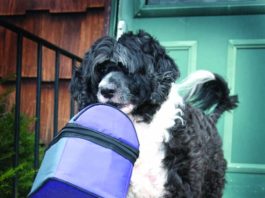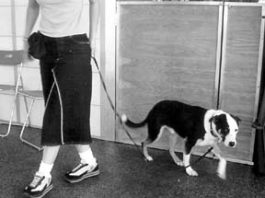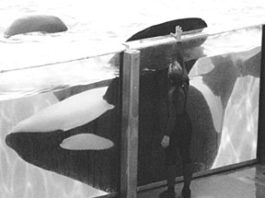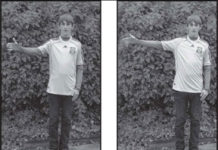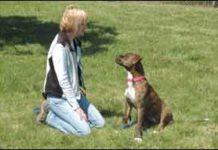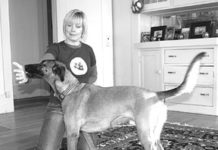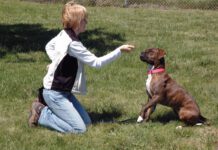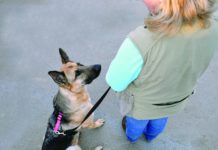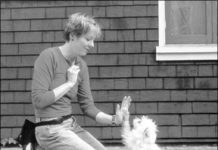Dog Training With Hand Signals
as long as you are consistent.üThis is the gesture I use for cuing "Down!" It's a large signal that can be seen by a dog who is far away.üThis is the gesture I use for cuing "Sit!"I start with my arms at my sides
Advanced Positive Dog Training Terms and Techniques
such as going through a series of "weave poles."üPremack exercise: To get the prize
Train Your Dog Using Imitation
I remember, years ago, confidently and assertively telling my training academy students "Dogs don't learn through imitation." But, degree by degree, I've been proven to be wrong.
Teaching Your Dog Calm, Slow Breathing
Radio talk show psychologist Dr. Joy Browne offers her listeners a stress-reducing “Square Breathing” technique. To relax before or during any potentially anxiety-producing experience, try square breathing: Inhale to the count of four, hold to the count of four, exhale to the count of four, and hold for four. With practice, you can increase each side of the “square” to a count of eight or even 20; the longer the count, the slower and more calming the breathing.
Target-Train Your Dog to Ring A Doorbell
Each month, I stand in the middle of my training center during the second session of my newest Level One class and introduce my...
How to Get a Dog to Behave
Berkeley
Shaping Your Dog’s “Sit”
Shaping taking a desired behavior, breaking it into small steps, and reinforcing the steps until you build the final behavior has become a standard dog training tool, especially in the force-free world. Those who are familiar with shaping regard it as invaluable for teaching and refining behaviors. If you don't yet have experience with shaping, try this exercise with your dog. It will help you realize how subtly and precisely you can influence the movement of virtually any part of your dog's body.
Fluency and Generalization in Dog Training
Fluency and generalization training methods prepare your dog to respond and behave correctly in ANY situation. In dog training, generalization means that your dog can apply a concept to many situations; he knows that Sit!" means he should sit whether he's home
Shaping Your Dog’s Behavior
or just the ball on the end of the stick? Do you want her to stand or sit when she touches the ball? Is it okay if she licks the ball or opens her mouth on it? The clearer your vision is
The Allure of the Lure
give the cue
Clean Up Your Cues!
It's important to know what your cues are for your dog. Yes, I bet you think you know, but in reality your dog may think your cues are very different than what you think they are.
Utilizing Target Training for Better Leash Walking
Does your dog know how to target? If not, the two of you may be missing out on one of the most versatile behaviors to come along since the rise in popularity of the positive dog training philosophy.



